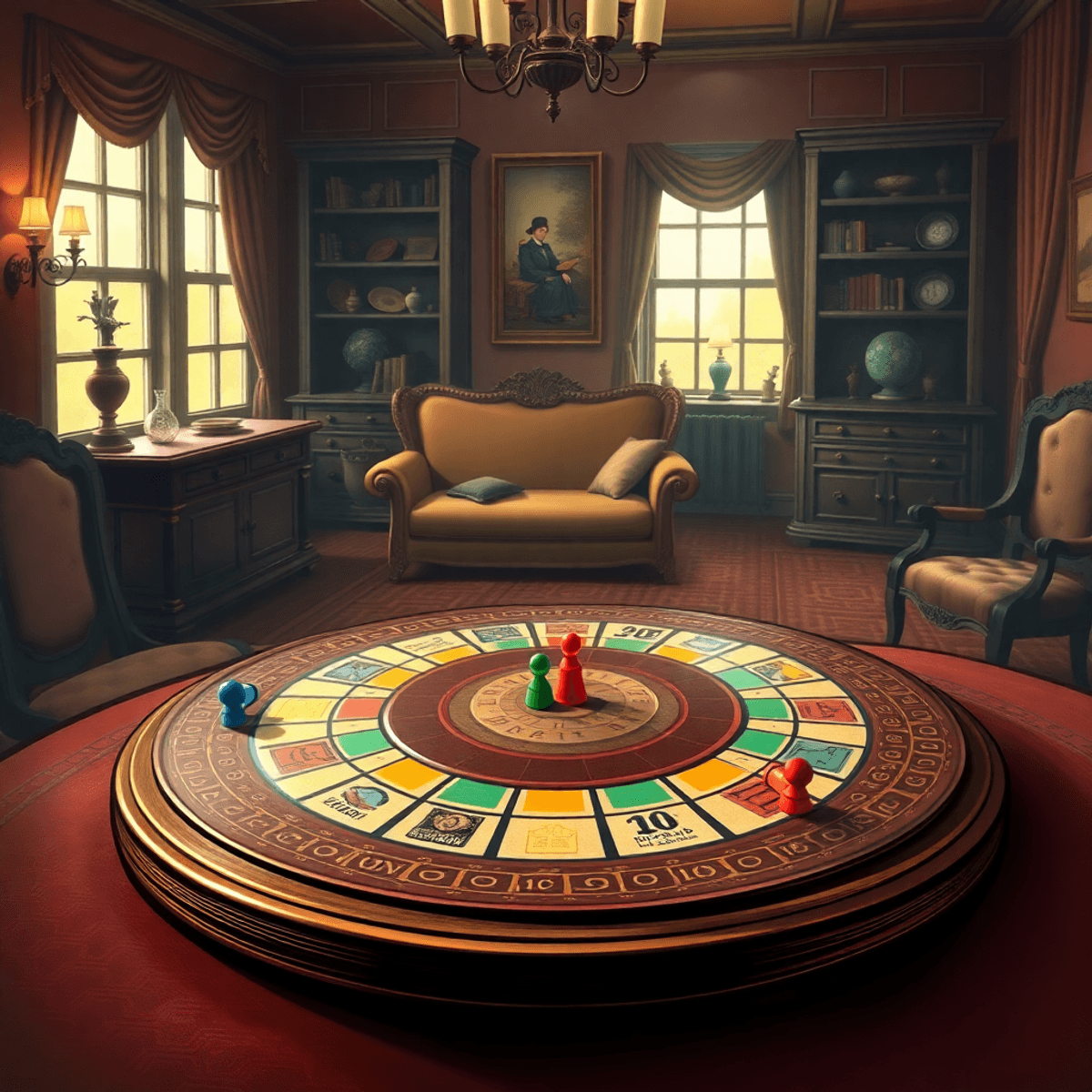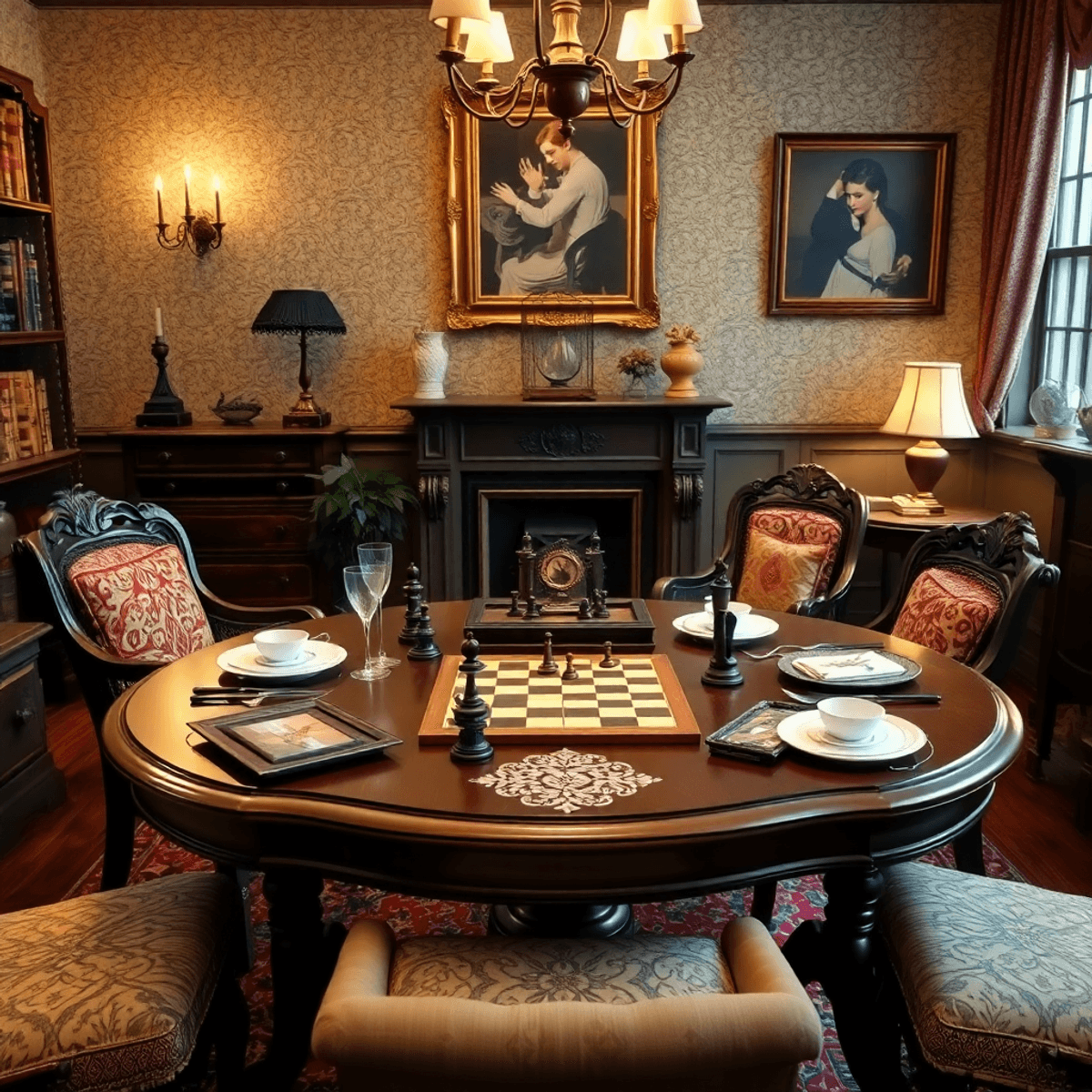
In the busy game rooms of Victorian England, an interesting board game called Eagle came out as a sign of the time’s growing interest in buying property and financial strategy. Made in 1883, this game fascinated players with its unique way of buying, selling, and trading properties – an idea that would later become the foundation of one of the most loved board games worldwide. Continue reading to find out more interesting facts about Eagle board game history.
What makes Eagle especially interesting is how much it looks like today’s Monopoly. The game’s board had a round track where players moved around, getting properties and collecting rents – parts that would show up years later in Charles Darrow’s invention. While many games from the Victorian era focused on teaching morals or just fun, Eagle was different by showing the time’s growing interest in business and real estate.
Did the makers of Monopoly get ideas from this Victorian game? The clear similarities between these two games hint at an interesting link that influenced the development of board gaming as we know it now.
The History of the Eagle Board Game
The Eagle board game was created in 1883 by George S. Parker, the founder of Parker Brothers. He designed this property trading game at the age of 16, during a time when Victorian society embraced board games as a respectable form of entertainment.
How Eagle is Played
In Eagle, players move around a square board, buying and selling properties while collecting “rent” from their opponents. The game is played as follows:
- Players roll dice to determine how many spaces they can move on the board.
- When a player lands on an unowned property, they have the option to buy it.
- If another player owns that property, they must pay rent to the owner.
- Players can trade properties with each other to make strategic deals.
This innovative gameplay structure marked a significant departure from traditional Victorian parlor games that often focused on moral teachings or educational content.
The Initial Reception of Eagle
Eagle was received very well, especially by the middle and upper classes. According to records from the [Victorian Board Games Society](https://www.vam.ac.uk/articles/victorian-board-games), Eagle sold impressively within its first year. The game’s success perfectly aligned with the era’s fascination with capitalism and property ownership.
Why Families Loved Playing Eagle
During the Victorian era, families spent a lot of their free time at home. They found joy in playing games together, and Eagle became a favorite choice for many reasons:
- Social interaction – Players had to negotiate and trade with each other, fostering communication and connection.
- Business education – Children learned basic financial concepts like buying, selling, and renting through gameplay.
- Entertainment value – Sessions could last for hours, providing continuous engagement and excitement.
The Impact of Eagle on Future Board Games
The success of Eagle inspired many similar property-trading games throughout the 1880s and 1890s. Advertisements from The Games and Puzzles Journal during that time highlight how prominent Eagle was in Victorian game catalogs. It was often featured alongside other popular titles such as The Game of Life and Snakes and Ladders.
The Enduring Legacy of Board Games
Even today, interest in board games continues to thrive. Many enthusiasts are looking to start their own board game collection. There are also opportunities to connect with fellow gamers through local board game meetups, ensuring that the legacy of games like Eagle lives on in contemporary gaming culture.
From Eagle to Monopoly: The Evolution of Board Games
The world of early board games laid the groundwork for Eagle’s groundbreaking design. Ancient games like Senet and The Royal Game of Ur established basic movement mechanics, while medieval favorites like Chess introduced strategic thinking.
The Victorian Era: A Turning Point in Gaming Culture
The Victorian era marked a significant shift in gaming culture. Popular titles included:
- The Game of Life (1860) – Introducing morality-based gameplay
- Snakes and Ladders (1870s) – Featuring race-to-finish mechanics
- The Mansion of Happiness (1843) – Emphasizing virtue-based progression

Eagle’s property-trading mechanics transformed the evolution of board games by adding economic elements to family entertainment. Its innovative approach influenced several key developments in gaming:
- The integration of real-world financial concepts
- The creation of variable player strategies
- The introduction of property ownership mechanics
These elements became standard features in numerous games throughout the late 19th and early 20th centuries. Eagle’s success inspired game designers to explore complex economic systems in their creations, leading to titles like Finance (1932) and Easy Money (1935).
Beyond Entertainment: Board Games as Educational Tools
The game’s impact went beyond mere fun, as it played a role in establishing board games as tools for teaching financial literacy and business strategy. Today, board games continue to evolve, with a wide variety of options available, including some of the best family board games for all ages.
How Eagle Influenced the Creation of Monopoly
The striking similarities between Eagle and Monopoly reveal a clear evolutionary path in board game design. Both games share fundamental mechanics that define property-trading games:
- Players move around a square board using dice rolls
- Property acquisition forms the core gameplay element
- Rent collection serves as the primary income source
- Special squares affect player movement and finances
The Impact of Eagle on Monopoly’s Gameplay
Elizabeth Magie’s creation of Monopoly in 1903 drew significant inspiration from Eagle’s property management system. The patent documents for The Landlord’s Game (Monopoly’s original name) showcase remarkable parallels to Eagle’s design.
Spatial Similarities: How Eagle Shaped Monopoly’s Board Layout
Eagle’s influence extends to Monopoly’s spatial organization. Both games feature:
- Corner squares with special functions
- Property squares grouped by type/color
- Monetary penalties and rewards
- A banking system for property transactions
Historical Context: The Great Depression and Monopoly’s Appeal
The historical context of the 1930s Great Depression amplified Monopoly’s appeal, as Parker Brothers adapted Eagle’s wealth-building mechanics to reflect contemporary economic challenges. The game transformed Eagle’s Victorian-era property management into a modern capitalist simulation that resonated with Depression-era Americans seeking financial empowerment through gameplay.
Legacy: Eagle’s Influence on Economic Simulation in Board Games
The Smithsonian Magazine notes that Eagle’s property-trading mechanics provided a crucial foundation for Monopoly’s development, creating a template for economic simulation in board games that remains influential today.
The Impact of the Eagle Board Game on Modern Gaming
The Eagle board game is a prime example of how Victorian-era gaming innovation continues to influence modern games. Its revolutionary mechanics and property-trading features have left a lasting mark on tabletop gaming, inspiring designers today.
Key Contributions of Eagle Board Game
The significance of the game can be seen in its major contributions:
- Property Management Systems: Eagle pioneered the concept of strategic property acquisition and management
- Economic Gameplay: The introduction of financial decision-making elements in board games
- Competitive Mechanics: Player interaction through property trading and negotiation
The Legacy Lives On
Modern game designers continue to draw inspiration from Eagle’s core mechanics. Games like Lords of Vegas and Fortune Street demonstrate how Eagle’s DNA lives on in contemporary gaming.
Discovering Victorian Entertainment
If you’re interested in experiencing a piece of gaming history, consider exploring vintage board games like Eagle. You can find them at specialized game shops or through historical game preservation projects. These classic games offer unique insights into the evolution of tabletop gaming and provide an engaging window into Victorian entertainment.



